In memoriam: Russell Weiss
It’s sad to lose anyone in the industry, but when an icon like Russell Weiss passes, it almost feels like the end of an era. And perhaps it is. Russell, the patriarch of the well-known Kurt Weiss Greenhouses of Center Moriches, New York, passed away June 15 surrounded by his friends and family. He was 84.
Russell was born on Long Island in 1936 after his parents arrived here from Germany. He began working alongside his grandfather Otto and father Kurt at an early age, producing azaleas in Queens, New York. He went on to study and graduate from Cornell University in 1957 and completed graduate studies at the University of Maryland. Eventually, Russell and his father branched out to begin the present-day Kurt Weiss Greenhouses Inc.
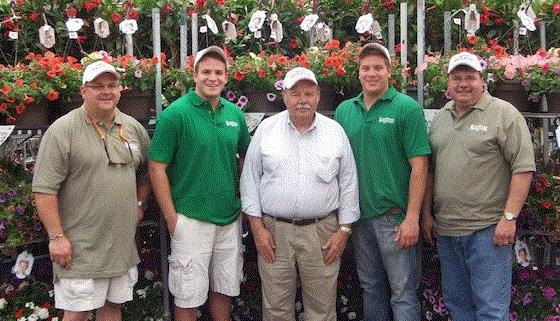
Russell (center) with his (left to right) son Wayne, grandsons Joseph and Kirk Jr., and son Kirk.
After Kurt was injured in an automobile accident, Russell, who was in his 30s at the time, assumed leadership. What started as a small company primarily growing azaleas for the New York City carriage trade quickly became known for growing azaleas, hydrangeas, annuals, perennials, tropical plants and more.
Russell served as president and CEO from 1972 until handing the company off to the next generation in 2016. Under his leadership, the company quickly turned into a full-fledged growing operation, producing azaleas, hydrangeas, annuals, perennials, tropical plants and more.
By the early 1980s, Russell’s grand vision helped build the company into a mini-conglomerate, providing landscaping services to the Park Avenue Mall in Manhattan, wholesaling other growers’ crops, manufacturing horticultural equipment, and building and distributing boilers for greenhouses—even shipping coal when rising energy costs caused many greenhouse businesses to suffer. He purchased Dauernheim Nursery, one of America’s oldest potted-plant growers, in addition to a company that produced water mats used to supply water to the plants, creating a vertically and horizontally integrated business. V&V Noordland Greenhouses, an engineering and construction company owned by Russell, was responsible for building greenhouses around the world, notably the construction of “The Land” at Epcot Center in 1983. He also built greenhouses at his alma mater Cornell.
Hard work and determination increased the company’s revenue by more than 110 times over 40 years to include 18 locations spread over Long Island, upstate New York, Connecticut, New Jersey, Pennsylvania, South Carolina, Florida and Canada. By the early 2000s, at its peak, the company was ranked as the largest greenhouse operation in North America with over 12.5 million sq. ft. of greenhouse space and 2,600 employees.
In addition to his key business responsibilities, Russell was formerly President of the Long Island Flower Growers Association, was a member of the Board of Directors of Rabo Bank, and was on the Seeley Conference Board of Directors at Cornell University.

In memoriam: Juan St. Amant
Juan St. Amant, the retired “Face of Plug Connection,” passed away Sunday, June 13, at his home in Vista, California. He was just 63. Thankfully, his final days were peaceful, with his family nearby.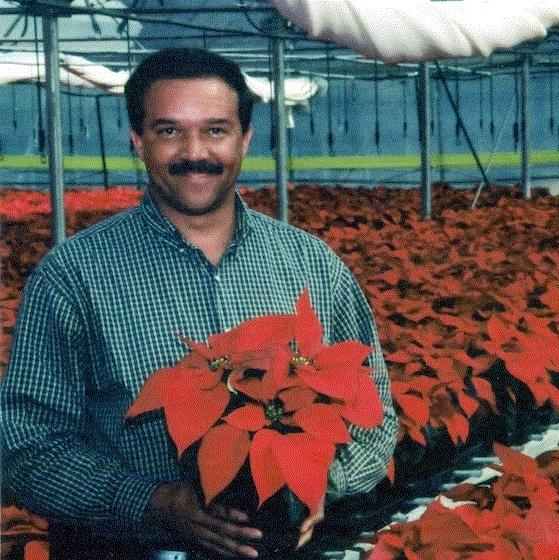
“Juan had a kind soul, a fun spirit and a mentoring personality,” recalls Michele St. Amant, his youngest sibling, who's a branch manager at Armstrong Growers. “He was inclusive of all and always invited us to any personal gathering or event at work. He was a terrific big brother and it was so special to have him as an industry colleague.”
Juan was the oldest of five children. He’s remembered as a thoughtful and kind-hearted person who loved his family, friends, music, animals and his work. He was dedicated to sharing his knowledge of plants and more with all. He graduated from UCLA and had a degree in teaching.
Interestingly, despite his long career in horticulture at Plug Connection, Juan had no experience or training when he arrived in 1987.
“Juan was the third employee we ever had,” recalls Tim Wada, owner of Plug Connection for its first 30 years. “His first duty was to learn how to drag a hose around and water the plug trays by hand. But he never complained about it; he just worked through it.”
As the company grew, Juan progressed from head grower to production manager to key accounts manager. But Juan really shined in his last role in new product development.
Tim says, “I’m pretty sure his last position was his favorite because he loved being out in the industry and being the contact person for anything new or interesting … I, of all people, owe Juan a debt of gratitude for helping us achieve the success we enjoyed and I’m sure he took a lot of pride in that, too. You always hear about how our industry was filled with good people—well, Juan was definitely one of them.”
Says Nicole Jackson, a colleague of Juan’s at Plug Connection, “He led with his heart. He was immensely kind and had such a great sense of humor.”
I second all the kind words said above. I only knew Juan through my visits to Plug Connection every spring for Spring Trials, but he was one of my favorite Trials hosts, always friendly and accommodating.

In memoriam: AMA founder Allen Monsma
A.M.A. Horticulture Inc. announced the passing of company founder Allen (Eelke) Monsma. Allen died suddenly yet peacefully on June 10 surrounded by his loving wife of 65 years, Shirley Monsma, and his daughters and sons-in-law, Connie and Rick Bradt, and Audrey and Peter DeJong. He was 87.

Allan was born in Broeksterwoude (Broeksterwâld), the Netherlands, in 1934. He and his childhood sweetheart and new bride, Shirley, arrived in Canada in 1956 with just $56 dollars in their pockets.
Allen founded A.M.A. in 1982. Since then, the company has expanded to become a leading horticultural supplier in North America. Allen’s life and his personal motto, “Go slowly, but with all your strength,” have been quiet encouragements to the A.M.A. team for nearly four decades since then.
“Dad was a pioneer and leader in North America’s horticulture industry, though he would never say it of himself,” said daughter Connie Bradt, co-managing director of A.M.A. with her husband Rick. “Sometimes this was through big innovations, like inventing Al’s Flower Pouch and Al’s Hopper, introducing the first North American-style stonewool plug tray to Canada or being the first in North America to commercially produce Ellepots. But most of the time, this was modeled through his countless humble acts of service. Even up until last week, he was often the first one out in production making Ellepots long before the sun came up. That was Dad, steadily working behind the scenes and putting other people’s needs first. His quiet strength has been the blueprint for A.M.A.’s success.”
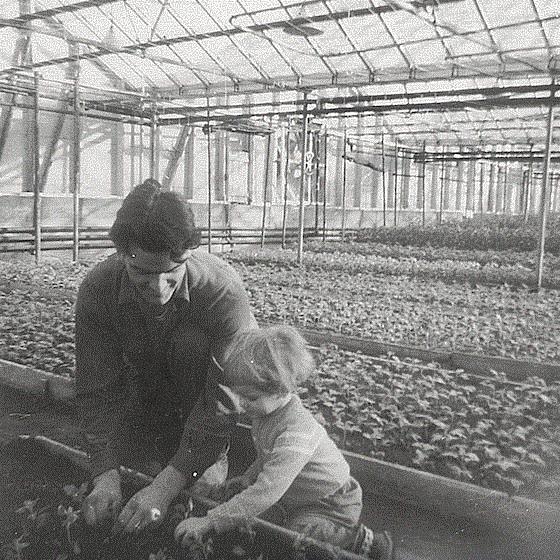 Allen and three-year-old Connie planting mums in 1963.
Allen and three-year-old Connie planting mums in 1963.

June 12-13: Hot, but not so hot
The national averages worked out to 7.2 in the U.S. and 6.6 in Canada. Yup, it’s just about over, as many of you wrote. That’s based on just 54 scores from 34 states and four provinces, so apparently my traffic is slowing down just as yours is.
But it’s not completely over. The scores were a mixed bag, with plenty of 5s, 6s and 7s, plus a few 2s and 3s. But I did receive two 10s, one from John Wickens in Minnesota where “the sun keeps on shining,” and one from Joe Ward in Oklahoma, who wrote, “We have been on fire all season."
They were on fire in New Mexico, too, where it was over 100F, reported Gary Guzman, with no rain in sight. He scored it a 6. It was hot and muggy in Texas, said George Freas. But his wholesale customers reported being up for the week, year-over-year, so he gave it an 8. As did Gene Pielin in Colorado, who wrote, “It's hot and getting hotter, but yes, the customers are still buying. What a great year to date.”
Here’s the map:
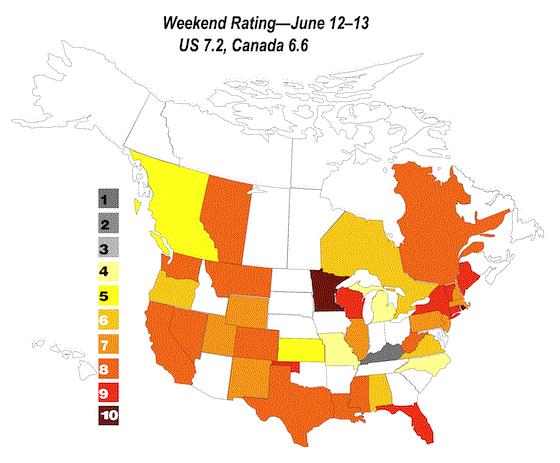
Regionally, New England and the upper Midwest were the strongest. I guess they were about the only spots not affected by the heat wave.

Your comments
British Columbia (3). “We have seen an almost unprecedented drop-off in annual sales in June, which I am hoping is weather-related, as we have seen a couple very cool, cloudy weeks with scattered showers. However, the timing of the slowdown coincided perfectly with the province announcing a reopening plan. Fingers crossed that the weather comes around before it is too late.”—Steve Andersen, Andersen’s Nursery
Nevada (8). “Business continues stronger than a year ago. Increased customer visits and items purchased still strong, but the size of the positive variance is slowing.”—Bruce Gescheider, Moana Nursery
Missouri (3). “Discounts started this week, so the vultures waited (they didn’t know this, but they could smell it, being the wild and cunning creatures they are!). Doing Dutch auction discounts: 25% today, 35% tomorrow, 45% Thursday, 55% Friday, 65% Saturday. Temperatures remain brutal for June. I hate end-of-season. But who knows—maybe I'll report a 7 this last weekend!”—Beth Weidner, Weeds Greenhouse & Gardens
Washington (8). “I thought our season was winding down, but business has actually ticked back up in the last week, especially last weekend!”—David Vos, Vander Giessen Nursery
Virginia (4). “We had some much-needed rain! But customer count is definitely back to pre-pandemic levels.”—Duane Weaver, Milmont Greenhouses
Montana (7). “Definitely less traffic as folks head out to camp or to the area lakes, but customers are loading up full carts. We still have awesome variety and availability, but are heading into hot weather so not replenishing small container sizes such as annual pack material. Still selling veggies, hanging baskets, annuals, loads of perennials, trees and shrubs, and even decent sales in house plants.”—Jeri Zirbel, Caras Nursery
Alberta (8). “Soil, compost and sod sales were very strong. Customers continue to pick up a couple of annuals to fill their containers. Our perennial lot was full for the first time this season and our tree lot had a constant stream of traffic. Our first order of tropicals showed up on Monday, so we’re looking forward to setting up the next phase of our annual greenhouse.”—Kristen Busse, Greengate Garden Centres
Michigan (4). “Sales are slow, but [we are] still blessed!”—Jerome Vite, Vite Greenhouses
Amen to that, Jerome!

What about next year?
Last time, I asked for your educated guess about the rest of the season and beyond into 2022. Here’s what a few of you had to say:
Alex Van Der Hengst, South Central Growers, Tennessee—“I’m very optimistic that this pandemic has been good for our industry. Customers have been engaged in our category like never before and the best part is, they like it!”
I replied to Alex that I tend to agree with him and mentioned the number of kids who probably planted a seed in a Dixie Cup for the first time. Alex replied, “Yeah, I see it in my daughter, who is 18—she is totally into houseplants and succulents. Social media is driving that craze, but even though we do not produce those items, I feel it is great for my category down the road if she gets comfortable with any kind of plants at an early age. A rising tide lifts all ships and all of that …”
Lowell Halvorson, Liberty Family Farms, Massachusetts (who gave the whole New England and New York region a 9.1. Lowell said “Glorious results” came out of Rhode Island and the Cape Cod region. You gotta like glorious results!)—“There is a lot of speculation about the current state of the market and what it means for the future. A useful reference is the similar cycle our industry went through after the Great Recession. Back then, our society took an enormous shock our generation has never seen, the economy went into a horrific freefall, no one was certain about their job and markets went haywire. Gardens boomed as vacations [got] cancelled, folks spruced up their homes with our product and a new generation was introduced to the pastime. It took three to four years to work out all the changes introduced.
“It’s helpful to have real-world references in unusual situations. If you remember the aftermath of the Great Recession, you can use it as a rough guideline for the next few years.”
Johannes “JP” Pieterse, Countryside Flower Shop, Nursery and Garden Center, Illinois—“We had a meeting this morning about 2022, which is going to be super difficult, but we are thinking about taking the average of 2019, 2020 and 2021, which is the base line to start with.
"Still hoping that through social media we can have people coming out next year spring again. We have their email address so we can send them e-news updates. Would be great when 2020 is the new base, but could be difficult to keep these numbers up so high. While we have our own soil filler, we can just order enough pots and soil, and keep producing next year while the season is going. We did the same thing this year, so based on sales, we did an extra round in the greenhouse in May, which turned out very well.”
Thanks for all the thoughts and ideas, guys!
If you’ve got an idea for how to plan for 2022, let me know HERE.

Get More from Your Growing Media
That’s the title of the next Ball Publishing webinar, slated for Tuesday, June 29, at 1:00 Eastern/Noon Central.
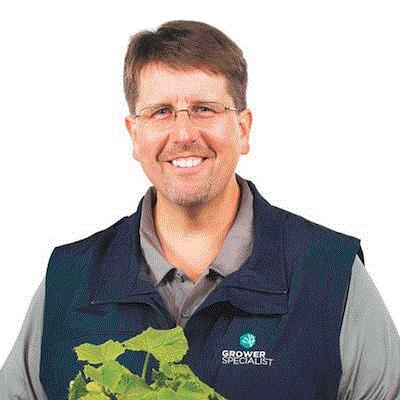
Growing media is the foundation for starting and producing quality crops, but how much do you really know about how media works—you know, the chemical, physical and biological properties of your mix? You might have learned it back in school, but there’s always time for a refresher. Or maybe you never had the chance to take a Soils 101 class. Well, now you can!
Tune in to hear Troy Buechel, Horticulture Specialist for the Eastern and Mid-Atlantic U.S. for Premier Tech, tell you how you can get more from your growing media to produce better-quality crops.
Sign up at www.growertalks.com/webinars.
See you there!
Oh, while there, be sure to click the “Available Now” link to watch our excellent Young Grower and Young Retailer finalists in the two webinars we hosted this past week. Everyone attending raved over the quality of these young growers and retailers, and they said they felt reassured that the future of the industry is in good hands.

Cuts: Up? Down? Or more like a kumquat?
This week, I got an email from reader Peggy Anne Montgomery of the Garden Media Group. She had a question about the recent USDA Floriculture Crops Summary statistics highlighted by Hortistician Marvin Miller.
Hi Chris,
I was just reading your latest Acres Online. I’m curious about your stats on cut flower sales in 2020. We are working on our Trends Report and we like to double check all of our facts. In your report, cut flower sales were down—“Sales of cut flowers were down 9.6% to $294.8 million,” but there was only reporting from 17 states, etc.
I represent lily and tulip cut flower growers in the U.S. and they said sales were up. In the National Gardening Survey estimates, households spent $6.55 billion on cut flowers in 2020: “With an estimated 104.6 million individuals spending money on cut flowers in 2020 and an average household expenditure of $62.63, households spent an estimated $6.55 billion on cut flowers in 2020.”
Can you help me understand—are sales up? Or down?
Naturally, this is the sort of thing I turn over to our in-house Hortistician, Marvin, who answered thusly:
Peggy Anne,
What you are doing is comparing apples and oranges, and perhaps you even have a kumquat thrown in as well.
What Chris and I reported on in Acres Online was the USDA Floriculture Crops Summary for domestic production for 17 states (but most of it is from California growers). What the NGA Survey reports is retail purchases from consumers; these include all cut flowers, whether domestically produced or imported across the entire country. As at least 80% of cut flowers sold in the U.S. are now imported (some think it may be closer to 88%), the domestic cut flower production will likely have very different trend lines than cut flower consumption.
I can also comment that in December we received the 2019 Census of Horticultural Specialties, which covers domestic production, but for 50 states. It showed big growth over the five-year period since the 2014 Census of Horticultural Specialties in cut tulip production (from 174.7 to 187.6 million stems), but a decline in all types of cut lilies (Asiatic, Oriental and Other). So it depends on with whom you are speaking, as tulip folks are doing well, but lily folks may not be.
The reality is in California, where most of the cut flower production is reported, a lot of cut flower producers have either sold their operations to producers of cannabis or hemp, or have closed their operations altogether. Domestic production has been accounting for a declining share of overall supply since the first imported cut flowers were reported in 1968. I don’t see anything on the horizon that will slow this conversion except maybe on a case-by-case basis in niche market opportunities.
And now we all know a lot more about cut flower statistics and how to interpret them! Thanks for letting me share that, Peggy Anne and Marvin.


Finally ...
Where’s Chris?
Golly, I haven’t written that in at least 15 months. Other than a few in-state driving trips, I haven’t been on an airplane since March of 2020. But Monday, I hop on a United jet for Los Angeles and the California Summer Trials 2021. Accompanying me will be fellow editor and videographer extraordinaire Jen Zurko, plus original Bobblehead Bill Calkins, who will be focusing on crop culture for Tech On Demand. (Ellen is sitting out the 2021 event). I’ve never been on video with Bill, so it’ll be fun to see how he works as my sidekick (at least you won't have to hear me say "Hey, Ellen!" a hundred times).

As we have every year, we’ll be sending daily Acres of Buzz e-newsletters from the road (if you get this newsletter, you’ll receive it automatically). Watch for them next Wednesday through Saturday. They’ll link to the videos we publish on YouTube, so you’ll get a good taste of the new summer CAST without having to endure a long plane ride while wearing a mask.






See you next time!

Chris Beytes
Editor
GrowerTalks and Green Profit
This e-mail received by 25,380 loyal readers!
Thanks to my loyal sponsors, who help me reach the 25,380 readers of Acres Online in 66 countries. Want to be one of them (a sponsor, that is)? Give Paul Black a shout and he'll hook you up.